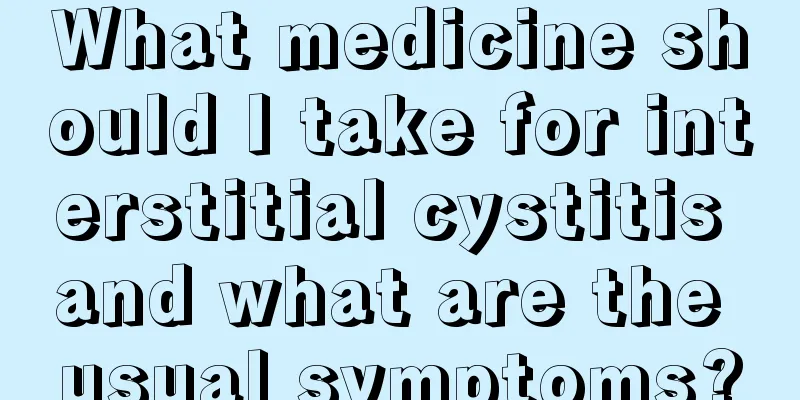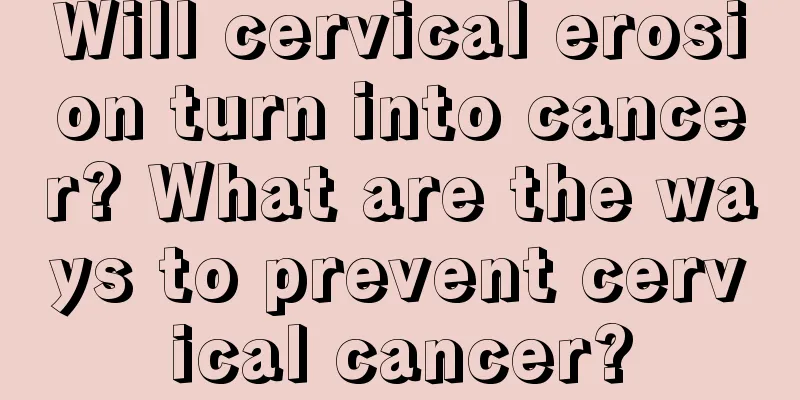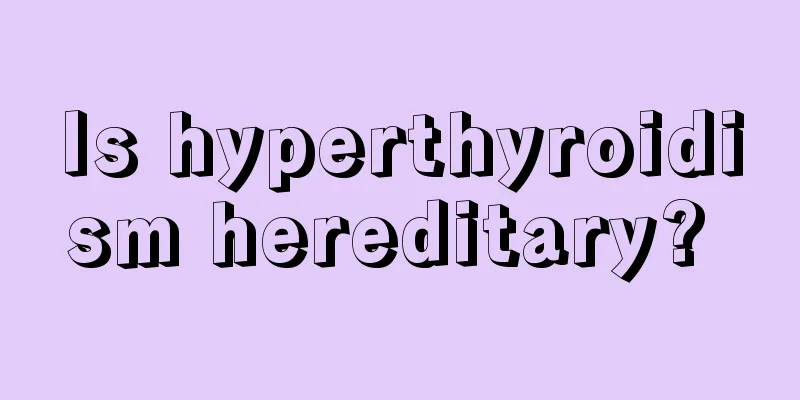What medicine should I take for interstitial cystitis and what are the usual symptoms?

|
We should all have heard of cystitis, but we may not be very familiar with interstitial cystitis. In fact, it is also one of the urological diseases. It's just that the incidence rate is relatively low. The incidence rate is higher than that in women, and patients generally experience symptoms such as abnormal urination, painful urination, frequent urination and increased nocturia at night. If not treated in time, it may lead to hydronephrosis, ureteral reflux or even renal failure, which are very serious. So we must pay more attention to it in our daily life. Taking medication: The treatments for interstitial cystitis mainly include non-surgical treatment and surgical treatment, and the drug treatments mainly include oral medications and bladder drug instillations. Western medicine generally chooses to use antibiotics for treatment, such as sulfamethoxazole (SMZ) 2.0g, trimethoprim (TMP) 0.4g, and sodium bicarbonate 1.0g, taken all at once; or 5 tablets of co-trimoxazole or 3.0g of amoxicillin, or 400mg of trimethoprim taken all at once. Although Western medicine works quickly, each patient's condition is different, so not every method is applicable. You have to go to a professional hospital for examination before the doctor knows which treatment the patient needs. Surgical treatment is suitable for ulcerative interstitial cystitis. Transurethral electrosurgical resection can significantly improve the patient's symptoms, but it is easy to relapse. Bladder augmentation and cystectomy are very traumatic, so patients should choose carefully. Symptoms: Interstitial cystitis often occurs in middle-aged women. Patients with interstitial cystitis often have severe urinary frequency, urgency and increased nocturia. It is chronic and progressive, but their urine tests are normal. There is microscopic or gross hematuria. Patients with interstitial cystitis often experience pain in the suprapubic area, which is particularly evident when the bladder is full, sometimes accompanied by urethral or perineal pain, which is relieved after urination, and sometimes even hematuria. On clinical examination there may be some tenderness in the suprapubic area or bladder area pain on palpation of the anterior vaginal wall. Some women even experience pain during sexual intercourse, or some patients have a history of allergic diseases; when they undergo physical examinations, there are often no positive signs, etc. These are all symptoms of female interstitial cystitis. The disease usually lasts for several years. What is very special is that the disease develops rapidly at the beginning, but quickly stabilizes after a period of time. Even without treatment, there is no sign of deterioration. Female interstitial cystitis can threaten human health and cause harm to the patient's body and mind. Therefore, we should go to the hospital for regular check-ups to understand the symptoms of the disease. At the same time, we should also work hard on diet and health care. We can eat more milk, buttermilk and other products, while avoiding aged cheese, chocolate, and the like, and avoid eating apples and bananas. |
>>: Is it useful to take Sanjin tablets for acute cystitis? Can it cure it completely?
Recommend
Can toilet water repel mosquitoes?
I believe everyone knows that toilet water can be...
What should I do if I have sciatica?
I believe that most of my friends are not so unfa...
What are the symptoms of kidney stones
Nowadays, life is generally stressful and fast-pa...
Are ovarian tumors benign? There are 3 clinically benign ovarian tumors
There are benign ovarian tumors, and the incidenc...
Can lotus root be eaten overnight
Whether the lotus root can be eaten overnight dep...
How to prevent lung cancer in terms of food? To prevent lung cancer, follow three dietary principles
If we want to completely cure lung cancer, we can...
What are the benefits of opening windows for ventilation?
There are many benefits to indoor ventilation, an...
Will bladder cancer recur?
Can bladder cancer come back? Bladder cancer does...
Yogurt suitable for pregnant women
Yogurt can be consumed appropriately during pregn...
Who can't use a footbath?
People who are in the fever period of infectious ...
What are the symptoms before death from advanced esophageal cancer?
Symptoms before death from esophageal cancer. In ...
How to bandage paronychia
The health of feet is very important for everyone...
What's going on with blood on toilet paper?
If there is blood on the toilet paper during bowe...
How to use a disposable urinary catheter?
With the widespread use of disposable devices in ...
Can patients with malignant melanoma get pregnant?
Can patients with malignant melanoma get pregnant...









